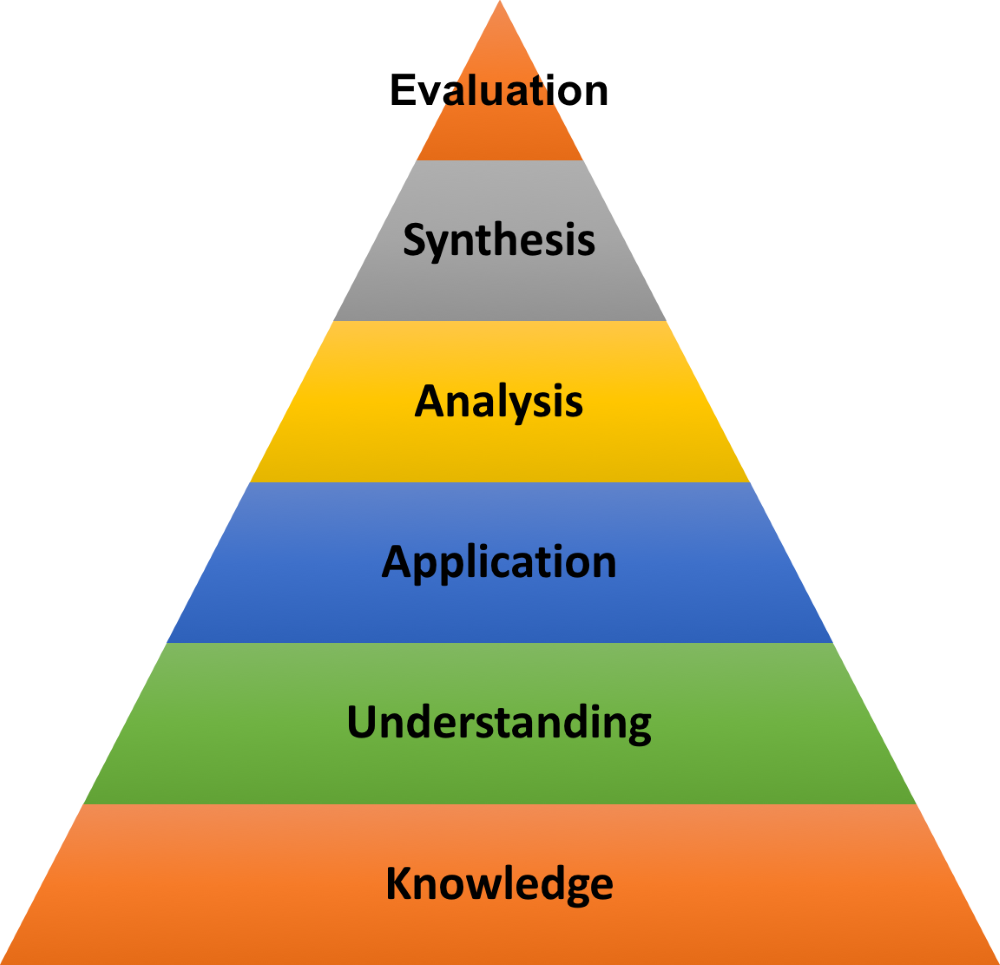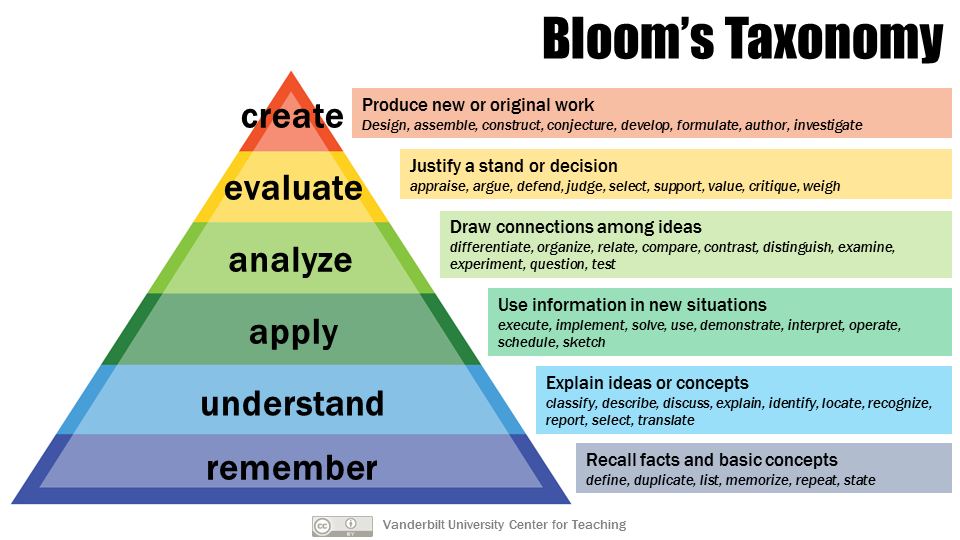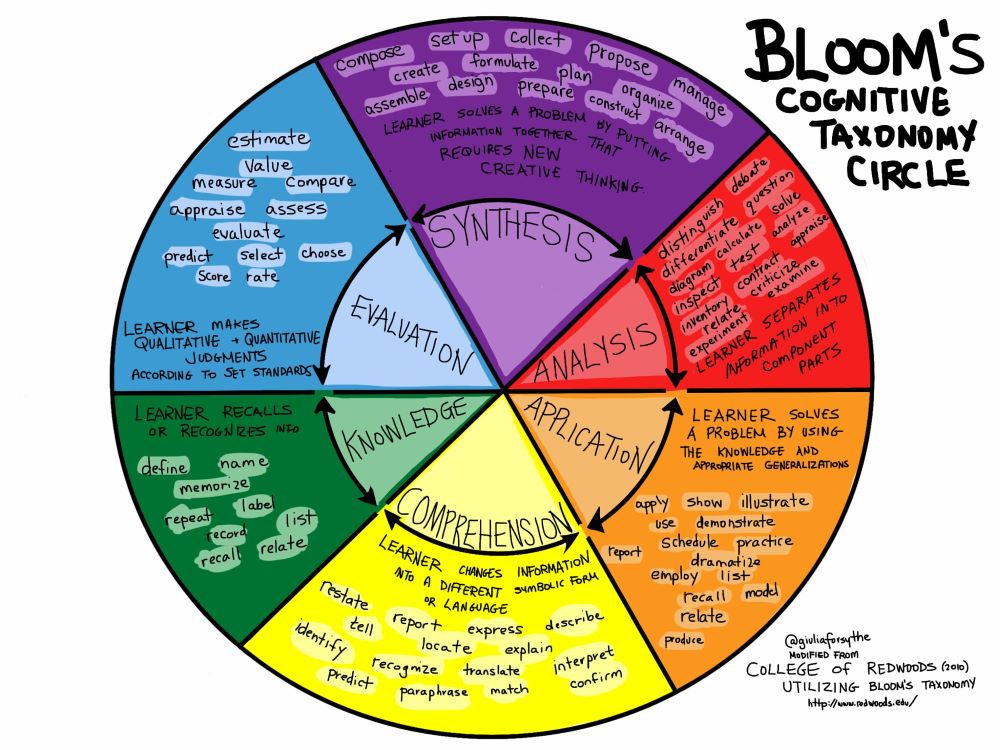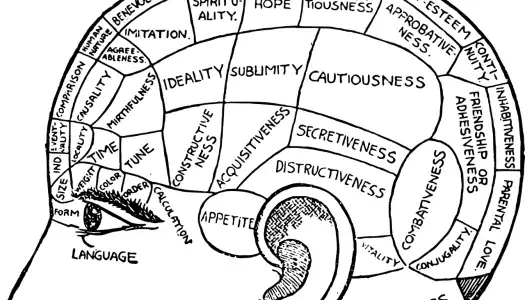If you spend enough time with educators, you’re bound to hear something about Bloom’s Taxonomy. But maybe you’re fuzzy on what it’s about. Something to do with levels of learning, action verbs, objectives? You don’t quite remember. Not a problem. You’re in the right place to clear it up. We’ll explain what Bloom’s Taxonomy is, why it matters, and, to spice things up, why some experts think it no longer matters at all.
This post is the second in our learning science series—the first focused on Gagne’s 9 Events of Instruction. We keep things simple, too simple perhaps, but encourage you to explore deeper if you’re designing, developing, and/or delivering education programs, like conference sessions and online courses. Even with instructional designers and instructors doing the bulk of the work, you should know enough about learning science to ensure they know what they’re doing and your attendees and customers receive the most effective learning experience.
The original version of Bloom’s Taxonomy
In 1956, Benjamin Bloom and a group of cohorts published the Taxonomy of Educational Objectives: The Classification of Educational Goals, aka Bloom’s Taxonomy. They wanted to break away from the fixation with rote learning (learning as remembering) by promoting what they saw as higher-level cognitive skills, as illustrated in this well-known pyramid.

The goal of this taxonomy was to help instructional designers and instructors define clear learning objectives and assessments so courses would meet learners’ needs. The taxonomy classified learning objectives into three domains: cognitive (knowledge-based), affective (emotion-based), and sensory (action-based). The cognitive domain, illustrated above, is the most well-known element of Bloom’s Taxonomy.
The revised Bloom’s Taxonomy
In 2001, a group led by Bloom’s student, Lorin Anderson, published a revision of Bloom’s Taxonomy: A Taxonomy for Teaching, Learning, and Assessment: A Revision of Bloom's Taxonomy of Educational Objectives. This group was influenced by the shift in psychology from behaviorism towards cognitive psychology. They took a more integrated approach and developed a taxonomy that focused on teaching and learning, in addition to assessment.

Anderson’s group used verbs instead of nouns to describe learning objectives and switched the top two categories, placing Create at a higher level than Evaluate. Their action verbs describe how learners process and digest knowledge. This resource shows how each objective is integrated with four dimensions of knowledge—factual, conceptual, procedural and metacognitive—giving educators six ways to think about each of the four types of knowledge.
Why many experts believe Bloom’s Taxonomy comes up short
Instructional designers and instructors still use Bloom’s Taxonomy as a scaffolding framework, but critics say it was never designed for that purpose. Wait. What, you may ask, is scaffolding?
Scaffolding “progressively moves students toward greater independence and understanding during the learning process.” With scaffolding, you provide the learner with just enough support so they can master a learning objective on their own. Here’s how that might look:
• Determine what the learner already knows about the topic.
• Relate new content to their existing knowledge.
• Assign tasks that challenge the learner to put new information into practice.
• Provide feedback.
• Get the learner to the point where they can independently (without support) show proficiency in the new knowledge.
The problem with Bloom’s taxonomy, per the critics, is that it doesn’t take preexisting knowledge into consideration at all.
Even worse, they say, is its emphasis on the sequence of learning objectives from “lower” to “higher” levels of thinking. Sequencing lessons and exercises this way isn’t the best approach to scaffolding. Critics detest the pyramid used to illustrate Bloom’s because it reinforces the idea that learners must progress from one stage to another, climbing up the pyramid. In reality, students jump around these stages as they learn. People often learn by doing—applying knowledge and creating things without going through the “lower” steps.

The taxonomy’s hierarchic structure makes it seem as if some skills are more important than others since they’re higher in rank. Remembering and understanding are just as important as “higher” skills.
Learning is messier than these illustrations would have you believe, say the critics. Cognitive skills aren’t performed discretely. Learning is an integrated, circular process; learners often use cognitive skills simultaneously.
And there’s more:
• The biggie: Bloom’s taxonomy is not validated by scientific research.
• It’s not learner-centered, for example, it doesn’t take motivation and autonomy into account.
• It doesn’t consider social learning.
Of course, it was published 65 years ago, so…
Why Bloom’s Taxonomy can be helpful no matter whose side you’re on
Critics admit the taxonomy has some redeeming qualities, even though haters say it causes more harm than good. Bloom’s Taxonomy can help instructors set clear and measurable learning objectives, which is useful for planning exercises and designing assessments. Instructors can use the taxonomy to identify and match the learning objective with related action verbs—observable behavior that they can assess.
Bloom’s Taxonomy reminds instructors to focus on a range of cognitive skills, instead of getting stuck in one mode, which allows learners to grasp information in different ways.
For professional development professionals, Bloom’s Taxonomy is good-to-know information. Although it may not be as relevant as it used to be, it still serves as an introduction to the different facets of learning and can help you think about the mechanics of effective learning.






